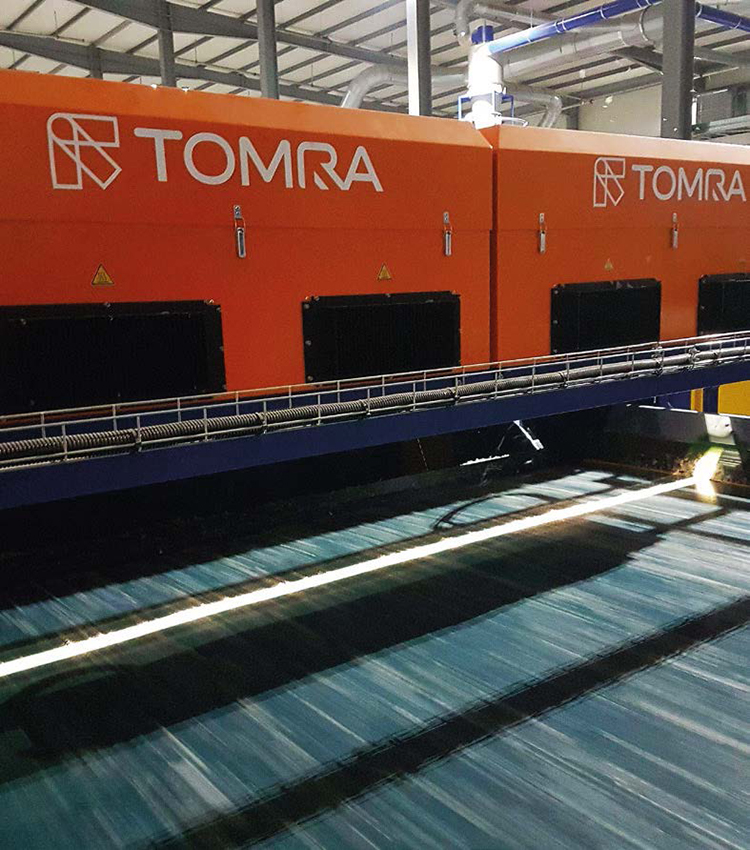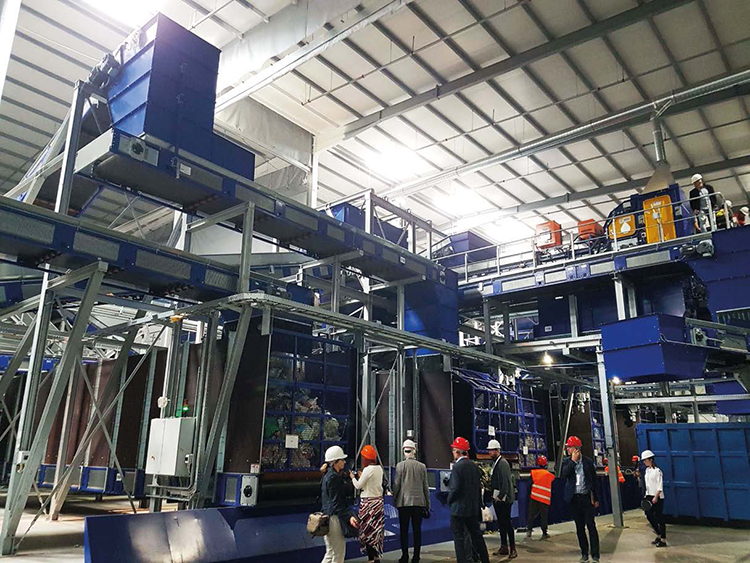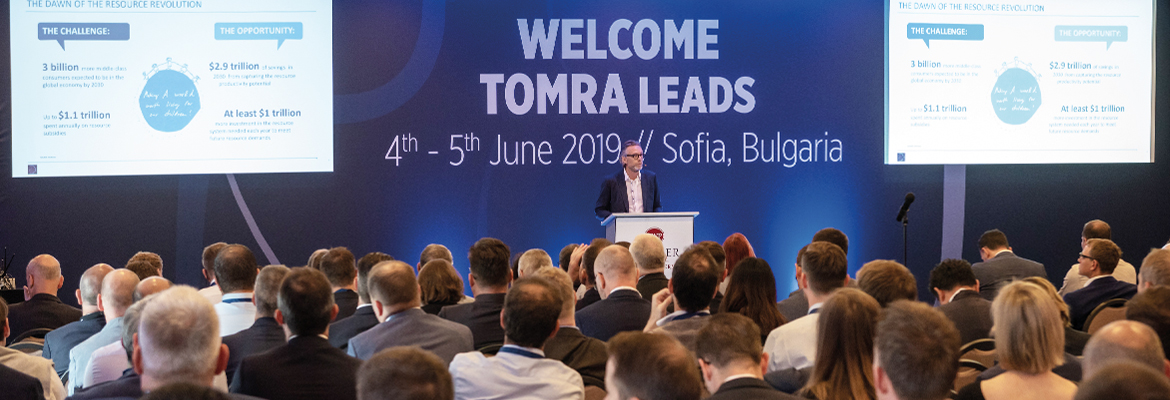Each year, eight million tonnes of plastic end up in the sea. An amount that is bound to double in the next twenty years and quadruple by 2050. It is as if a lorry load of plastic were dumped in the sea every minute. Despite government recommendations, pushing for more efficient recycling systems, data is anything but encouraging: only 5% of manufactured plastic is adequately recycled, 40% is landfilled and one third is dumped in sensitive ecosystems, including oceans.
This and other data were presented at the Tomra Leads Global Conference organised by Tomra Sorting Recycling in early June in Sofia. But something is changing in the recycled plastic industry, also thanks to the way brands and retailers are discovering positive actions that can be taken with regards to the end-of-lifecycle of plastic packaging.

“The plastic material industry has long touted the benefits of plastics in medical, automotive and aerospace applications, as if this somehow justified single-use plastic production. China’s shutdown as a destination for post-consumer plastics in developed countries such as the EU and the United States, coupled with increasing awareness of nanoplastic and microplastic dispersion into the environment, is facilitating a positive dramatic change,” explains Edward Kosior, Nextek’s founder and managing director – an association offering advice on plastic material recycling – former professor of polymer engineering at RMIT University, Australia.
These two factors, along with the new European strategy for single-use plastics, have led to the fact that the only way to make sustainable plastic packaging is to transform it into 100% circular solutions where post-consumer plastics can be recycled into new packaging, in excess of 30-50%.
Therefore, this shift is generating considerable demand for high-quality post-consumer recycled plastic, which boosts large-scale investment programmes in research and development at an international level. Countries must now devise local markets for discontinued packaging – no longer exportable to third countries – which are currently lacking adequate facilities for its management. Goals for the foreseeable future must include packaging collection with minimum contamination, the evolution towards 100% recyclable packaging and the elimination of non-recyclable packages where still sold. Lastly, refinement of existing recycling technologies so that material properties are kept unaltered, thus allowing a large-scale reuse in new applications while building a vast and lucrative market for post-consumer plastics. Packaging accounts for 40% of manufactured plastic materials and most recycled ones. To date, other applications for the construction and the automotive industries are not yet generating large recycling volumes during material end-of-life cycles. “The main contributor to plastic material recycling is likely to be waste electronic and electric equipment (WEEE),” explains Kosior.

Long seen as rivals, virgin plastic and recycled plastic come from the same source. “Pressure on the transformation of the way plastics are used and reused has an impact both on virgin and recycled plastic since both will be abandoned if the solutions at the end of packaging lifecycles are not implemented quickly. Manufacturers producing virgin material rely on recycling companies to justify their increased production of plastic for critical uses such as food and household items. Virgin plastic manufacturers gain financially from a healthy and profitable recycling sector. This is why some virgin plastic leader brands are buying recycling companies,” continues Kosior.
Last year, near Sofia, a new Integra Plastics plant was opened using 14 Tomra Autosort machines. The plant can recycle 40,000 tonnes/year of mixed-colour post-consumer film and thanks to a high level of automation employs only 15 people for the whole process of selection and transformation of waste from film to granules. Integra’s speciality is the production of low-density polyethylene (LDPE), high-density polyethylene (HDPE) and polypropylene granules (PP). The material is fed to giant grinders and is then placed on conveyor belts where, thanks to a magnet and a sift, unwanted materials such as metal and other fine particles are removed. The material is then selected and sorted by the machine – up to six different flows according to type of polyolefin and colour if necessary – before the plastic is hot washed. After washing and drying, plastic flakes are cleaned from any impurity, colour and/or residual materials left before being sent for regranulation. In this phase plastics are compressed, melted, filtered, degassed, homogenised and transformed into pellets. In the final phase, pellets are packed in 1-tonne bags, ready for a wide range of uses. Among the various future recycling options, experts also include options such as chemical and biological recycling and depolymerisation. “Chemical recycling will not go beyond small scale while biological recycling will keep growing because there is a need for a wide and efficient development of collection and composting facilities since these materials do no degrade simply if placed in the wrong environment or in anaerobic conditions. Although this sector is constantly developing it is also being held back by high costs and the lack of separate waste collection systems for rigid packaging. Depolymerisation is currently only available for PET and nylon and other minor plastics such as polystyrene and acrylic (PMMA); to become a concrete solution, depolymerisation must be able to ‘close the circle.’ This means that the chemical produced during polymer splitting must feed the beginning of the cycle, otherwise it will be useless,” concludes Kosior.
Tomra Leads Global Conference, https://solutions.tomra.com/tomra-leads-conference-2019


